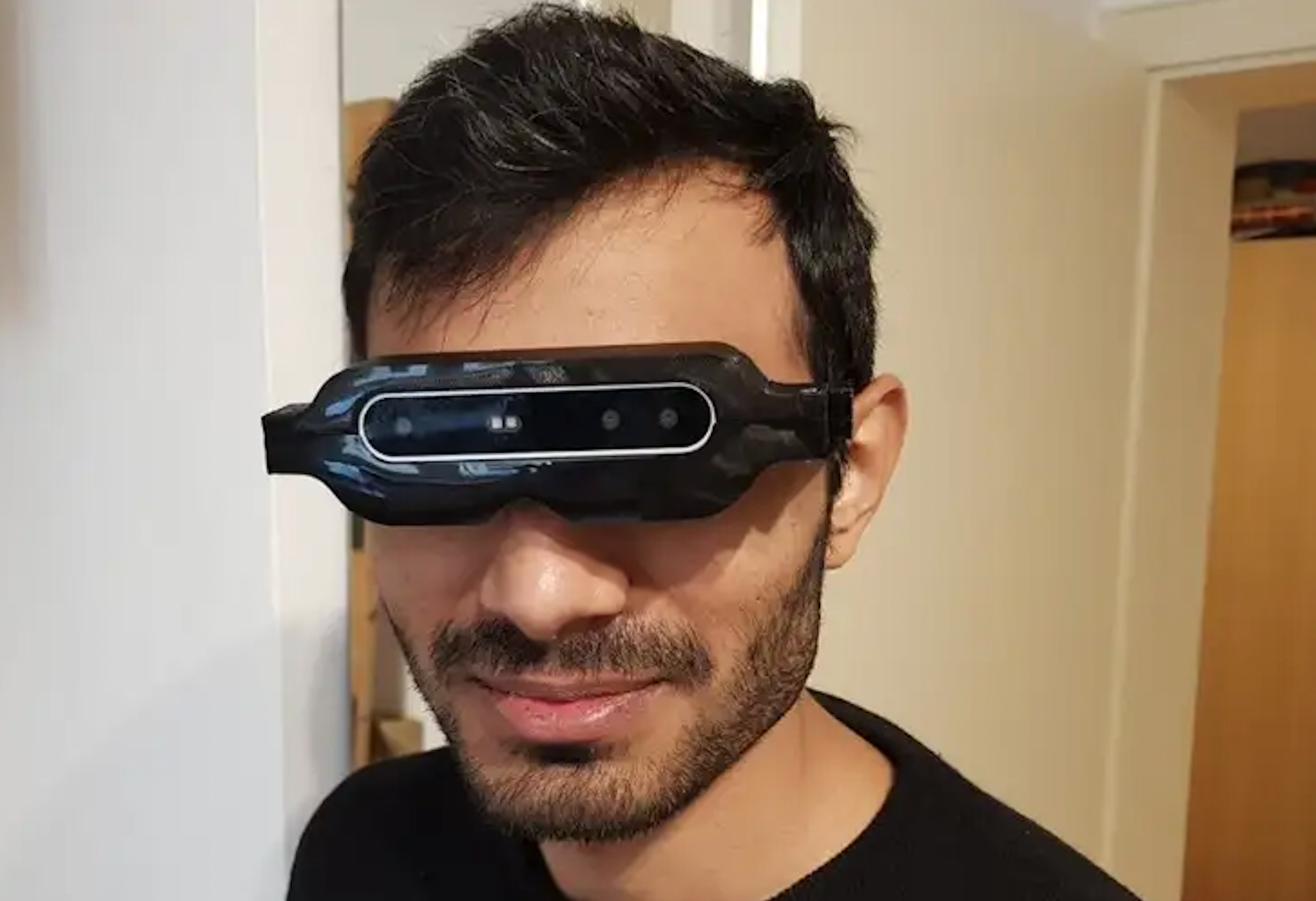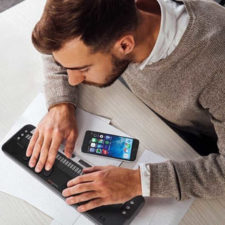Mobility Aids for Visually Impaired Users: Improving Autonomy
Enhancing Lives With Advanced Assistive Devices for the Blind
The assimilation of innovative assistive devices for the blind is changing just how individuals experience their surroundings and interact with their communities. What does this development indicate for the future of assistive modern technology and its duty in encouraging people?
Overview of Assistive Tools
Assistive devices for the blind incorporate a varied variety of innovations and tools made to boost freedom and boost the quality of life for people with aesthetic impairments. These devices cater to numerous demands, from navigation and movement to communication and daily task management.
One of the main categories of assistive gadgets includes flexibility help, such as white walking canes and overview dogs, which aid users browse their surroundings securely. Electronic travel aids, outfitted with sensors and audio comments, likewise play a considerable role in flexibility enhancement.
Additionally, devices that help with daily living activities, such as adaptive cooking area devices, Braille tags, and speaking watches, equip people to perform tasks individually. Communication help, consisting of display viewers and Braille display screens, help with access to details and make it possible for individuals to involve effectively with the digital globe.
Additionally, low-tech solutions like magnifying glasses and large-print materials remain vital for many customers. Jointly, these assistive devices offer not only as functional tools but likewise as important enablers of autonomy, promoting better engagement in a globe that usually focuses on sighted experiences. Their combination right into everyday life is necessary for advertising inclusivity and enhancing overall wellness for those with visual impairments.
Cutting-edge Technologies being used
Development in technology has significantly transformed the landscape of tools offered for individuals with visual problems. Among the most noteworthy improvements are smart glasses integrated with increased reality, which give real-time navigating assistance and object acknowledgment. These devices utilize progressed video cameras and expert system to supply acoustic signs, boosting the customer's spatial understanding and freedom.
Furthermore, mobile applications have arised as powerful resources, making it possible for individuals to determine currency, checked out text out loud, and navigate strange settings with verbal instructions. Devices such as Braille display screens and refreshable Braille tools proceed to develop, supplying smooth connectivity with computers and smart devices, therefore enhancing interaction and access to details.
Wearable modern technology, consisting of smartwatches outfitted with voice-activated attributes, further empowers customers by facilitating quick access to notices and signals without calling for visual engagement. Tactile maps and 3D printing are also getting traction, offering tangible representations of areas that aid in orientation and wheelchair training.
Jointly, these cutting-edge innovations not only boost the lives of visually damaged individuals however additionally foster greater freedom, inclusivity, and involvement with the wider community, thereby improving assumptions of accessibility. (Wearable technology for low vision)
Individual Stories of Empowerment
Empowerment typically arises from individual experiences that highlight the transformative influence of technology on individuals with visual impairments. Take, for circumstances, the story of Sarah, a young musician that restored her enthusiasm for painting with the usage of a clever cane geared up with challenge discovery. This gadget not just facilitated her mobility yet instilled a newfound confidence, permitting her to browse public rooms independently and pursue her creative undertakings.

These narratives emphasize the extensive impacts that advanced assistive tools can have on every day life. By enabling people to get rid of obstacles, innovation cultivates a feeling of freedom and self-worth. Such empowerment tales work as a testimony to the potential of innovation, illustrating just how the right devices can dramatically enhance quality of life and open doors to brand-new possibilities for those with visual impairments.
Advantages of Advanced Solutions
The combination of cutting-edge technology into assistive devices considerably transforms day-to-day experiences for those affected by vision loss. Screen readers for the blind. Devices such as smart walking canes geared up with sensing units, navigating apps, and wearable innovation are created to provide real-time comments, enhancing spatial awareness and lowering the risks linked with flexibility.
Furthermore, advanced assistive technologies foster social incorporation by assisting in interaction and communication. Voice-activated gadgets and applications allow people to accessibility info and engage with their environments individually, damaging barriers that previously hindered their participation in academic, specialist, and social setups.
Furthermore, the personalization and adaptability of these options cater to the diverse needs of users, thereby enhancing their total top quality of life. Improved capability, such as things acknowledgment and official statement text-to-speech capacities, encourages individuals with aesthetic problems to do jobs that they may have once found testing. Inevitably, advanced assistive modern technologies not only improve freedom and safety and security yet also advertise dignity and self-worth, allowing users to lead satisfying lives.
Future Trends in Assistive Tech
As technology remains to progress, the landscape of assistive gadgets for the blind is poised for amazing developments that will certainly better enhance accessibility and independence. Arising trends in assistive innovation show a shift toward enhanced combination of expert system (AI) and artificial intelligence, enabling gadgets to adjust to individual user requires in real-time. These advancements are expected to facilitate more instinctive navigation systems that can identify barriers and provide audio feedback, company website considerably improving outdoor mobility.
Furthermore, the growth of wearable technology, such as smart glasses equipped with enhanced truth, will allow customers to obtain contextual info regarding their environments, consequently improving their spatial awareness. Innovations in haptic modern technology guarantee to develop responsive feedback gadgets, allowing individuals to view details through touch, enhancing learning and communication with their setting.
Telecommunication advancements are also leading the method for remote support services, where experienced specialists can supply guidance via video calls, guaranteeing assistance is easily available. As these patterns unfold, the future of assistive gadgets for the blind will unquestionably cultivate higher autonomy, empowering people to browse their globe with confidence and convenience.

Verdict
The integration of advanced assistive tools for the blind represents a significant development in cultivating independence and boosting lifestyle. By utilizing ingenious innovations, these devices empower individuals to browse their atmospheres with greater confidence and autonomy. As the field remains to develop, recurring r & d will likely generate much more sophisticated services, better changing the lived experiences of people with aesthetic disabilities and advertising a higher feeling of inclusion within culture.
The assimilation of advanced assistive devices for the blind is changing just how individuals experience their environments and communicate with their areas. The assimilation of cutting-edge modern technology into assistive devices dramatically transforms day-to-day experiences for those impacted by vision loss.As modern technology continues to progress, the landscape of assistive devices for the blind is positioned article source for exceptional advancements that will even more improve ease of access and independence. Emerging trends in assistive modern technology suggest a change toward enhanced integration of synthetic intelligence (AI) and machine knowing, allowing devices to adapt to specific user needs in real-time.The integration of innovative assistive devices for the blind stands for a substantial improvement in promoting independence and enhancing quality of life.